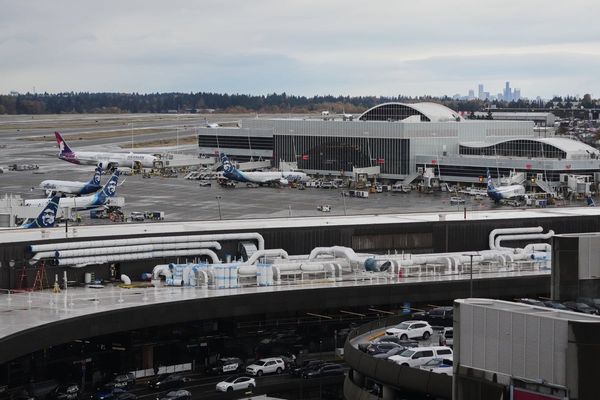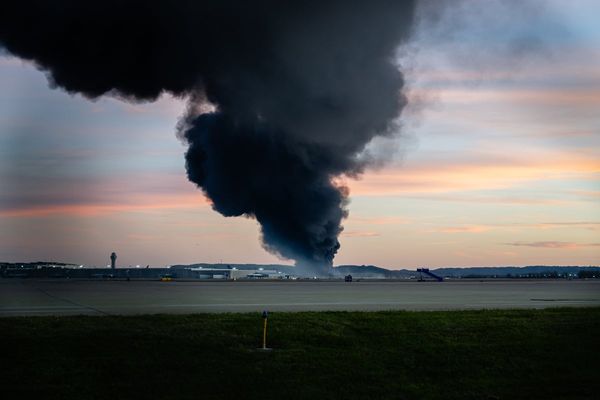
Bigger car, smaller engine.
Sounds like a recipe for a weekend of mediocrity. Especially when that smaller engine is a modest four-cylinder powerplant tasked with dragging a big, heavy off-road machine around the place, over all kinds of tricky terrain and knee-deep slush.
But wait, the weekend is not lost. Far from it.
Off-road icon Jeep has extracted new life and spirit from what should be a clumsy, hulking off-roader - the Wrangler Overland.
A car with more power, using less fuel and offering better technology and features than has been the case for this big rig.
The Wrangler model has been a feature of the Jeep range for almost four decades - a car apparently made for driving bikini-clad females around beaches and deserts all along the California coastline.
Or at least that's what the ads say.
With its ability to shed its roof and various other panels to allow breezy, open-air driving on the great beaches of the world the Wrangler has grown into a beloved off-road bush-basher Down Under too.
This ultimate fun machine has undergone perhaps the biggest transformation in its 38-year history. Gone is the six-cylinder, 3.6-litre V6 engine that has accompanied the Wrangler on many of those adventures, replaced by a new motor and different personality.
Replacing the V6 is a surprisingly feisty little turbocharged, two-litre engine, coupled to a smooth 8-speed transmission and one of the world's most advanced off-road systems.
It's been quite a while in the making - the Wrangler was first launched in 1986, built in Toledo, Ohio (yes, home of Corporal Max Klinger from M*A*S*H).
And those military links have always been a big part of the Wrangler appeal.
That history goes all the way back to the late days of World War II, plus the Korean conflict - when it was known as the Willy's Jeep - a moniker you'd be unlikely to find on any self-respecting vehicle these days.
And it looks almost identical to how it did all those years ago. No wonder many prospective buyers would hardly notice changes made in the name of technology as well as a comprehensive facelift.
Most of those changes are beneath that familiar grille format.
Most significant is the powerplant, which has given this fourth-generation Wrangler a surprisingly responsive engine-transmission combo.
Despite being almost half the capacity of the six, the turbo four produces an impressive 200k/w and 400Nm - which gives the Wrangler sufficient low-down torque to suit the most difficult of muddy tracks or stream crossings.
When it's time to head for home the Wrangler offers a comfortable and well-equipped five-seat, five-door configuration.
The combination is surprisingly effective.
Switching from six cylinders to four has substantially reduced the Wrangler's weight - giving it improved acceleration and upgraded off-road capability.
Not quite enough to displace Jeep's legendary "Rubicon" rock jumpers (they'll be getting the same engine in this upgrade), but capable enough to earn the "trail ready" badge which signifies its go-anywhere DNA for high-tech Jeeps.
That's not the only way in which this Wranger has taken strides.

The presentation of the cabin is most impressive. That's despite oddities such as the electric window switches located down beside the gear shifter (they have to go there for when the doors are removed).
This Wrangler will be offered in four variants - Sport S 4DR - (a four-door which replaces the "Night Eagle" model), the tested Overland DR plus Rubicon in 2DR and 4DR.
Pricing starts at $75,950. While it's a decent ask, the upgrades, particularly in comfort and technology, help improve the value equation.
Add two doors to the entry-level model and it's an $84,950 Overland, while a Rubicon fit-out rounds out at $90,450 in the four-wheel-drive, three-door version.
Jeep says the company has been careful to keep pricing untouched in this iteration, instead adding a more stylish and plush cockpit plus features including new front grille.
There are new wheel designs, antenna built into the windscreen, side curtain airbag, 12.3-inch UConnect cabin management system as well as power seats on Overland and 4DR with electric seats on Overland and DR Rubicon models.
Road manners are not too bad - although its big, fat off-road tyres make the car feel as if it wants to wander at highway speeds. Cabin noise remains a regular companion - a difficult issue to resolve given the car's roof and side panels can be removed.
Otherwise, the electronics are modern and easy on the eye - most particularly the fully-digital instrument panel which is practical and functional.
Off-road capability remains a feature of the Jeep - thanks to Dana solid axles, a two-speed transfer case, traction control and skid plates. A float rear axle enhances off-road ability on the Rubicon models.
JEEP WRANGLER OVERLAND DR
HOW BIG: It looks bigger from the outside than you get inside, thanks to the stepped design which sees the cabin substantially narrower than the track width. That, in turn, compromises the cargo compartment and three rear seats. It's comfy, but not quite practical.
HOW FAST: With 200kW beneath the bonnet it is a capable weekday commuter and highway cruiser. The steering leaves a bit to be desired.
HOW THIRSTY: The week-long review covered close to 500km and, thanks to plenty of highway running, managed a respectable 9.7L/100km.
HOW MUCH: Not cheap at $75,950 (plus on roads), up to $90,450 for the flagship Rubicon, but it's decent value considering its go-anywhere capability.







